
Archive SharePoint Online Sites Using M365 Archive Feature

Table Of Contents
About Microsoft 365 Archive
Microsoft 365 Archive is a feature that allows you to archive SharePoint Online sites. When you archive a site, it is not accessible and is also removed from search results.
Archived site goes into an explicitly colder tier, no longer consumes a tenant’s active storage quota, and instead drives Microsoft 365 Archive storage consumption. Being in this colder tier means the site is no longer accessible by anyone in the organization outside of Microsoft Purview or admin search.
Why archive a SharePoint Site?
Why would you want to archive a site? Well, maybe it’s no longer being used but you still need to keep it for compliance reasons. SharePoint storage is expensive but if you archive a site, you can save money. The archived site will cost about 4 times less than the active site.
You Can Save up to 75% on the Storage Costs
Storage for archived sites is metered and charged at a $0.05/GB/month rate vs. the standard SharePoint storage rate of $0.20/GB/month. That’s a savings of 75%!
Restore Price
Restoring the site is free, But beware – it’s is only free within the first seven days. If you restore it after seven days, you’ll be charged $0.60/GB. So restoring a 100 GB site after seven days would only cost $60, but restoring a 1 TB site would cost as much as $600.
Best Time to Archive a Site
This screenshot is the perfect example of when you should archive a site:

The storage is almost full. Let’s assume your budget can only cover 1 TB of extra storage. You have to options:
- A. Buy 1 TB of storage for $200/month
- B. Archive 1 TB and save $150/month
The choice is clear. You can save $150/month by archiving a site. Even if you need to restore a large SharePoint site for $600, you will still save money.
Prerequisites
Before you begin, you must ensure you have a resource group in an Azure subscription.
Enable Syntex (SharePoint Premium) in Your Tenant
Navigate to the Microsoft 365 Admin center > Setup > Use content AI with Microsoft Syntex. I know that it says Syntex at the time of writing it, but I am sure it will be renamed to SharePoint Premium sooner or later.
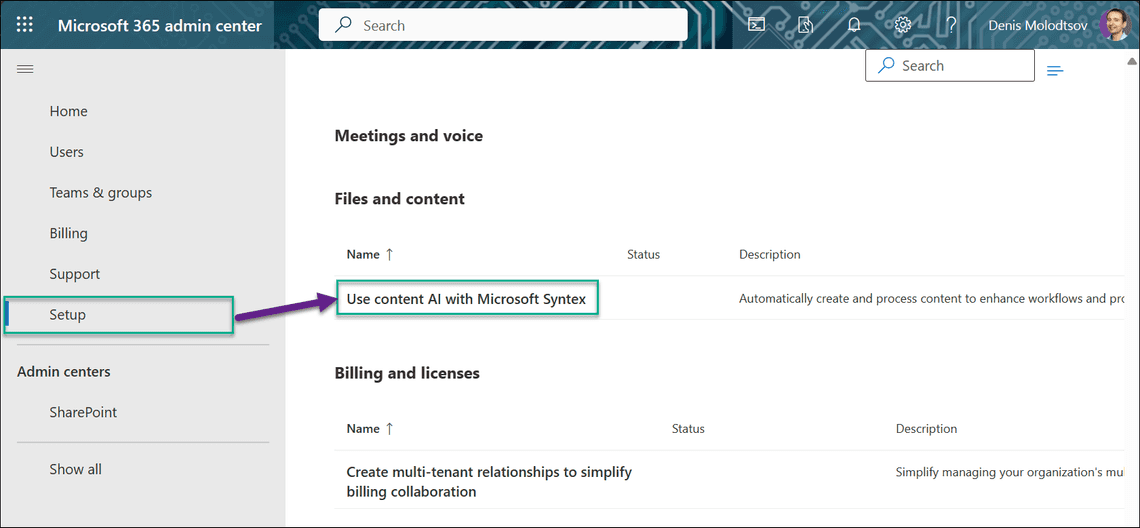
Click Manage billing to enable the feature.
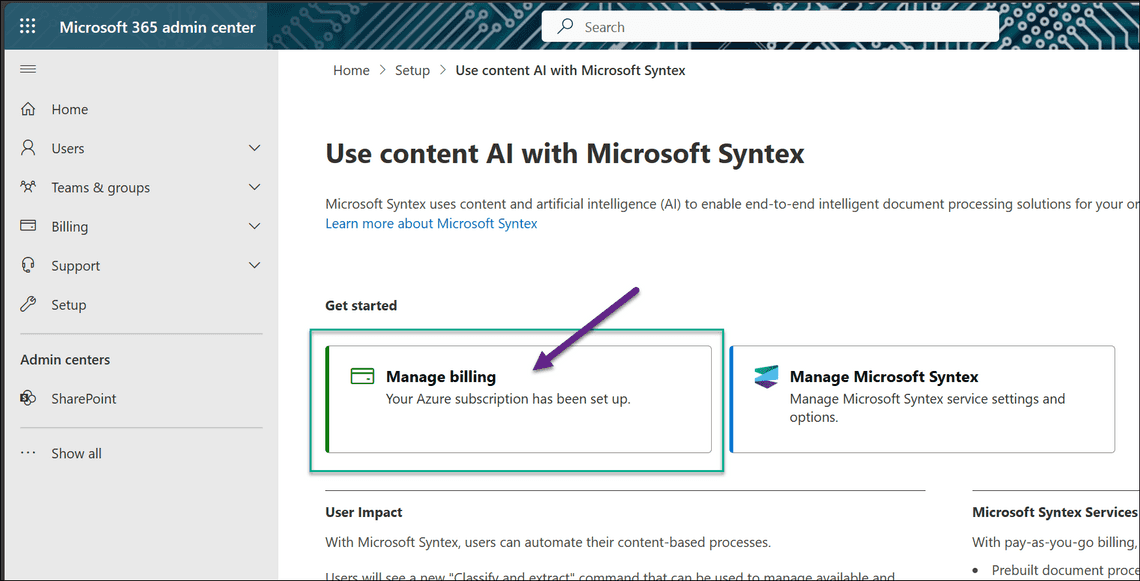
Select your Azure subscription and a resource group to configure Microsoft Syntex.
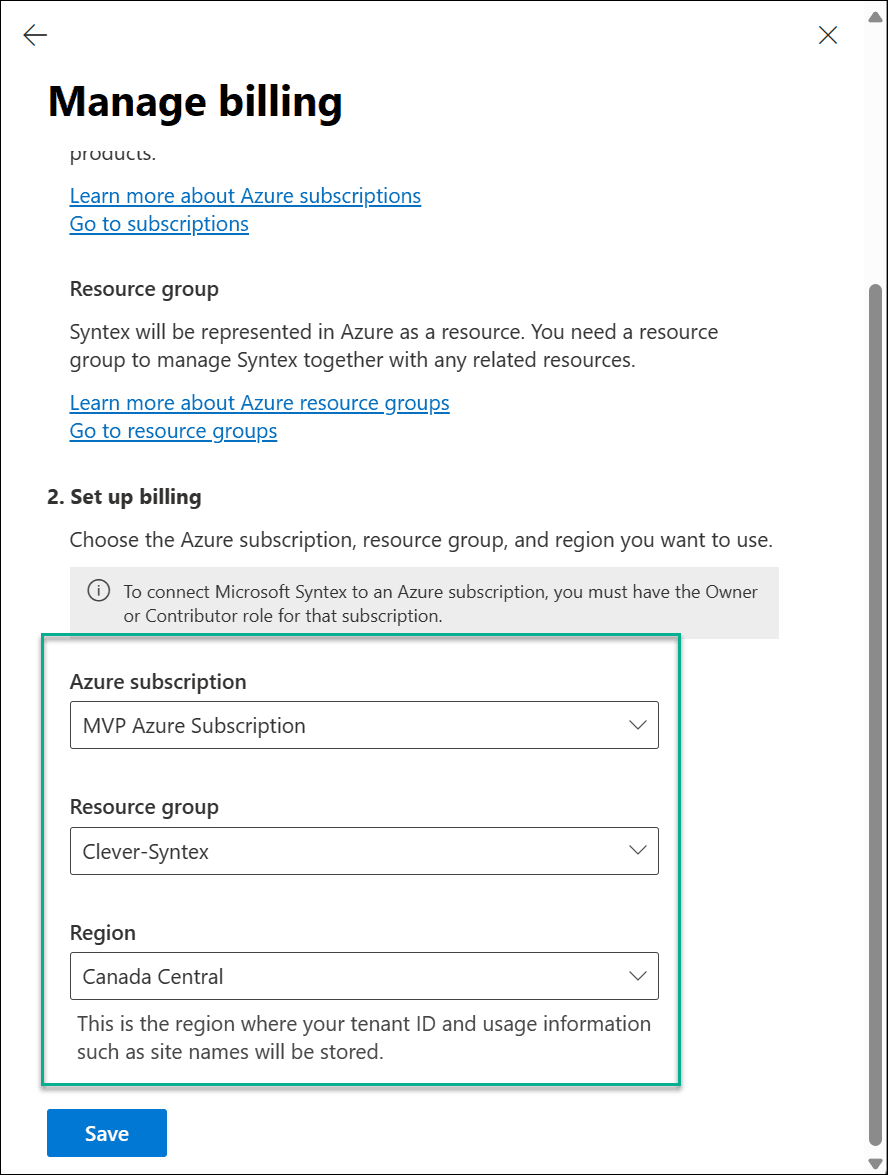
Enable Microsoft 365 Archive
Navigate to the Microsoft 365 Admin center > Setup > Use content AI with Microsoft Syntex > Manage Microsoft Syntex.
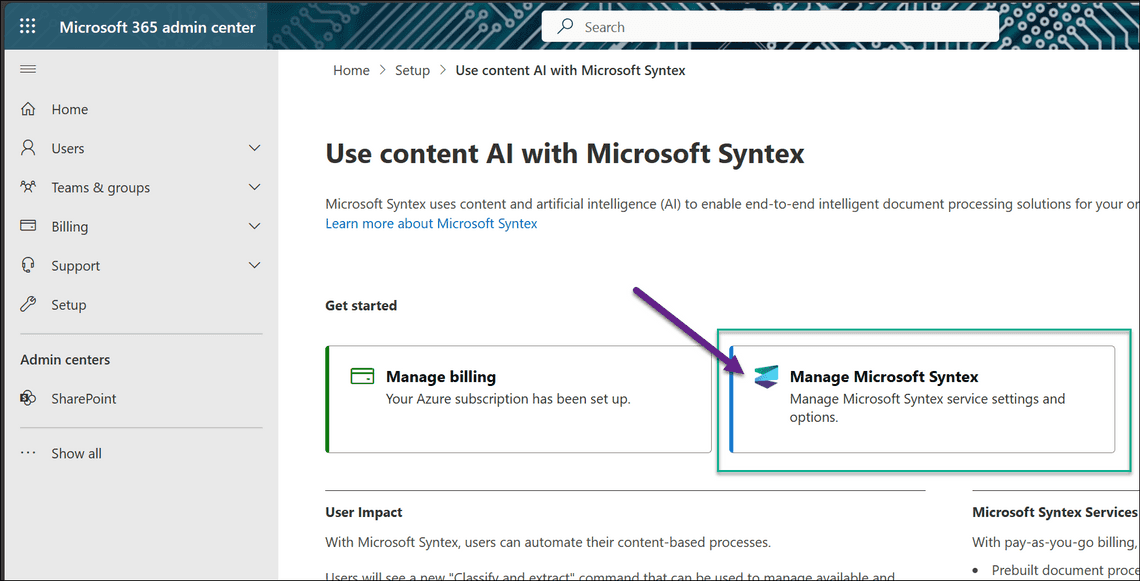
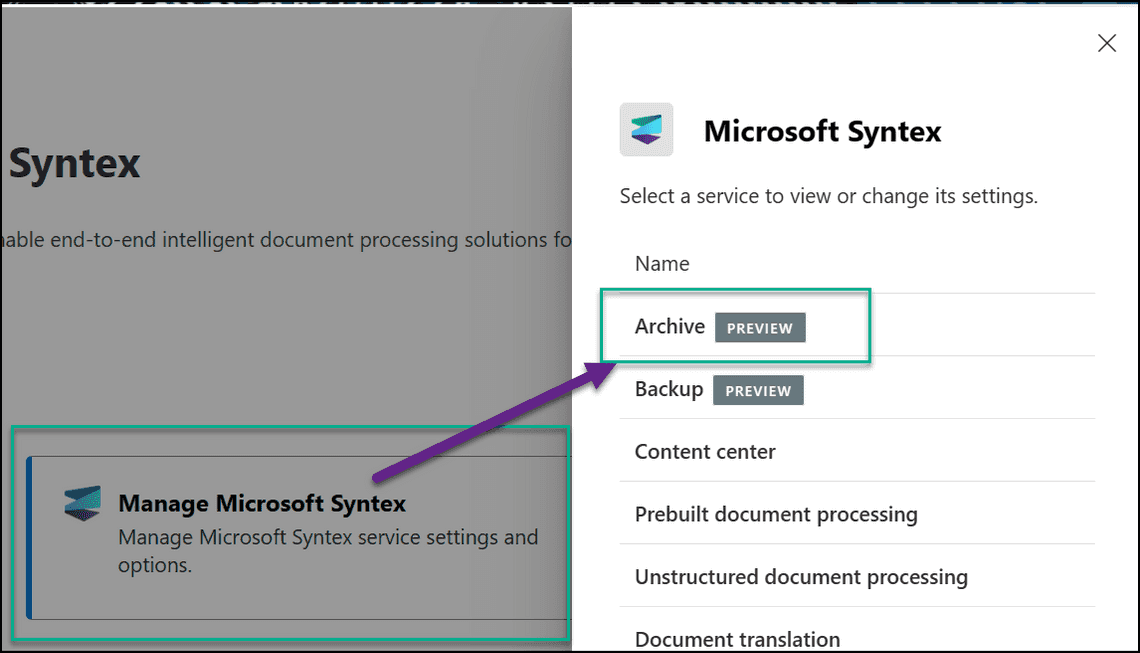
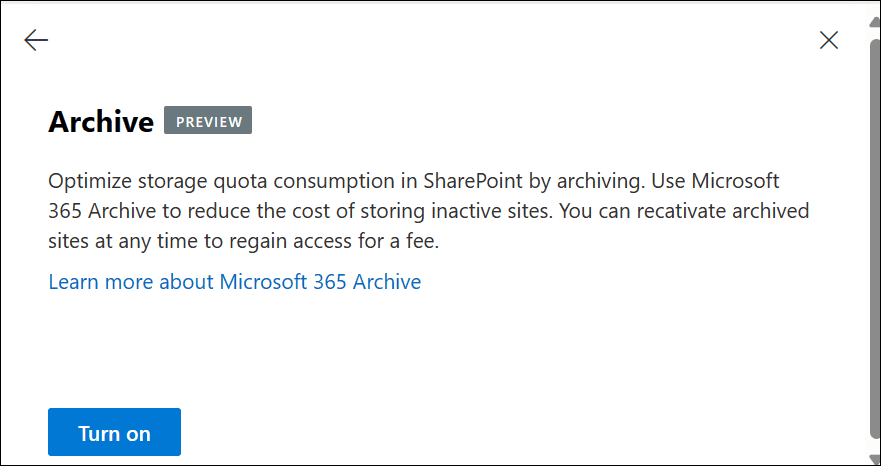
Test the Archive Feature
- Navigate to the SharePoint Admin center > Active sites
- Select any site and click Archive
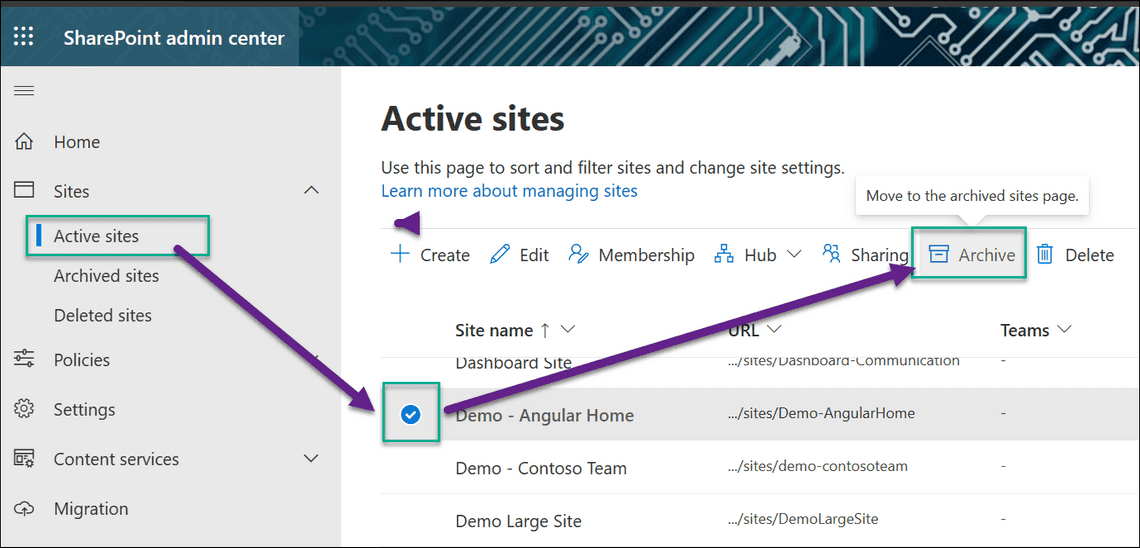
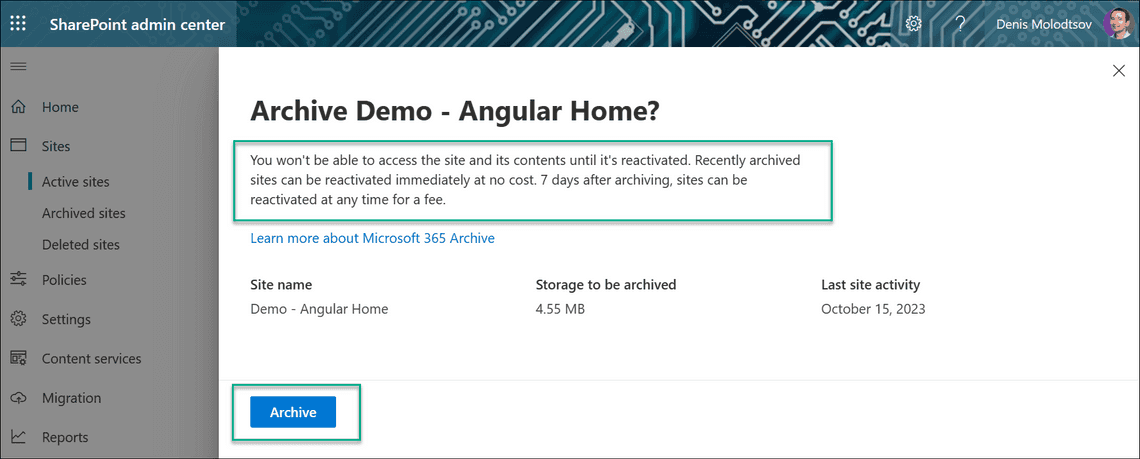

Accessing the archived site
If you navigate to a site that has been archived, you will see the following message:
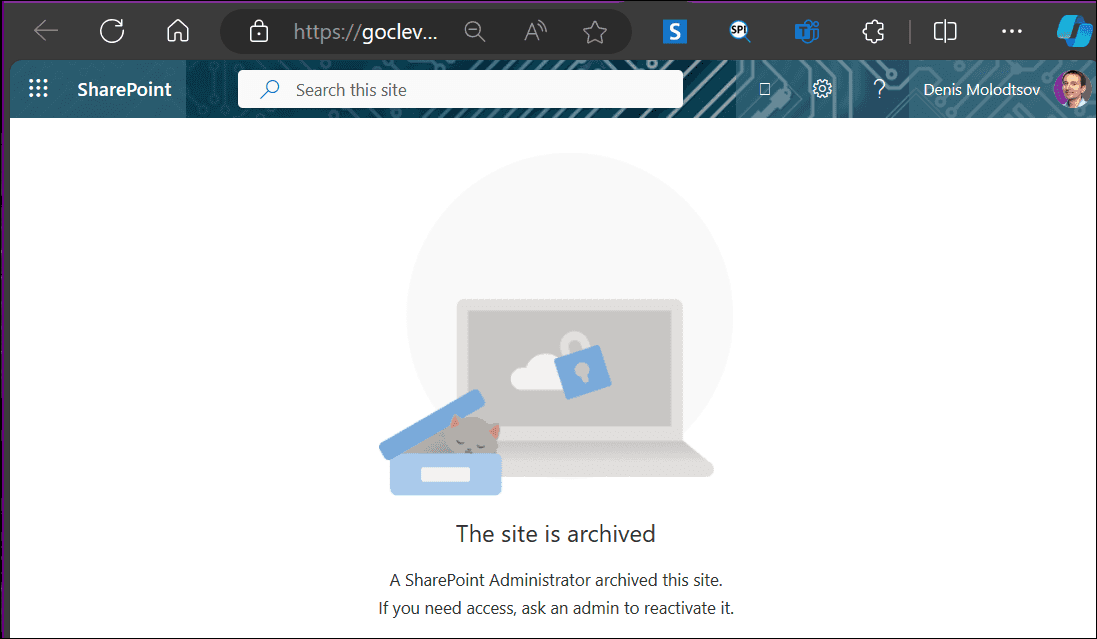
Azure Resources - Results
If you navigate to the Azure portal and check the resource group for the first time, you might notice that the Azure resources are missing.
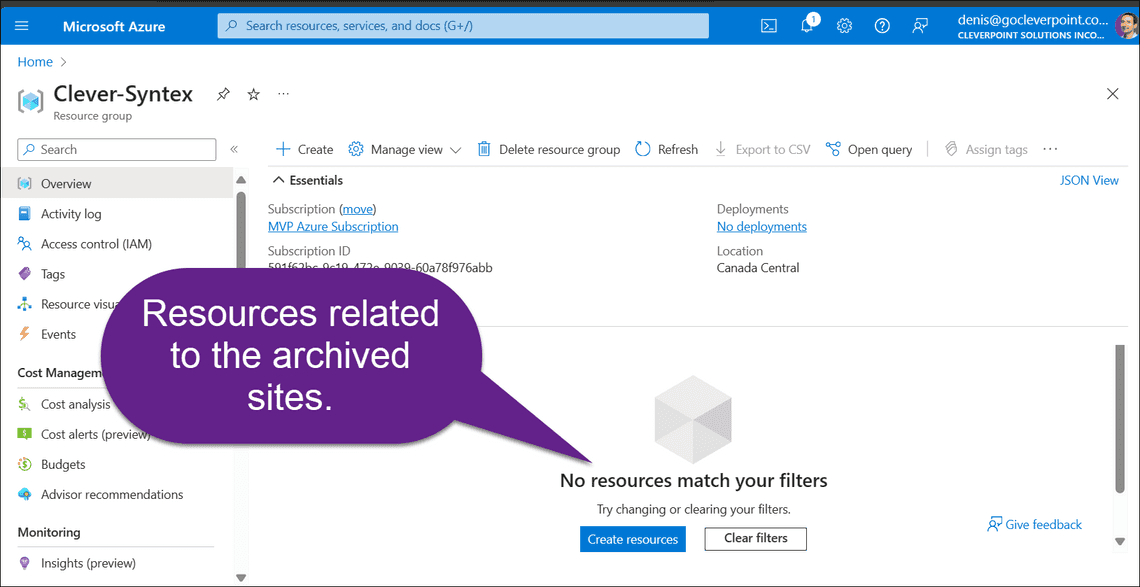
No storage account or other resources are created. That’s because the archive isn’t really stored in Azure. It’s stored somewhere in the Microsoft 365 cloud and it’s not visible in the Azure portal. You probably wonder why we had to create a resource group if it’s going to be empty. The reason is that the Azure group is only used for billing purposes. One lesson I learned is that I should give this resource group a meaningful name that indicates it’s used for SharePoint Premium. Otherwise, someone might assume that it’s an empty, unused resource group and delete it.
Restoring a Site After 7 days
According to Microsoft documentation, restoring a site might take up to 24 hours. Here are the steps I followed to restore a site:

4.55 MB might cost me a dollar to restore. I suspect the price is rounded to the nearest dollar, and I will pay less than a dollar. I will update this article once the site is restored and I get an invoice.


I was presented with this message:
You’ll be charged a reactivation fee. This reactivation fee is based on the retail price for reactivations. Your actual charges may be lesser, and can be seen in Microsoft 365 Archive bill.
The site will move back to Active sites page and start consuming active storage. This action can’t be cancelled once it starts. Estimated reactivation fee $1


Can I Archive Multiple Sites at Once?
Yes, you can. Select two or more sites and click Bulk edit > Archive.
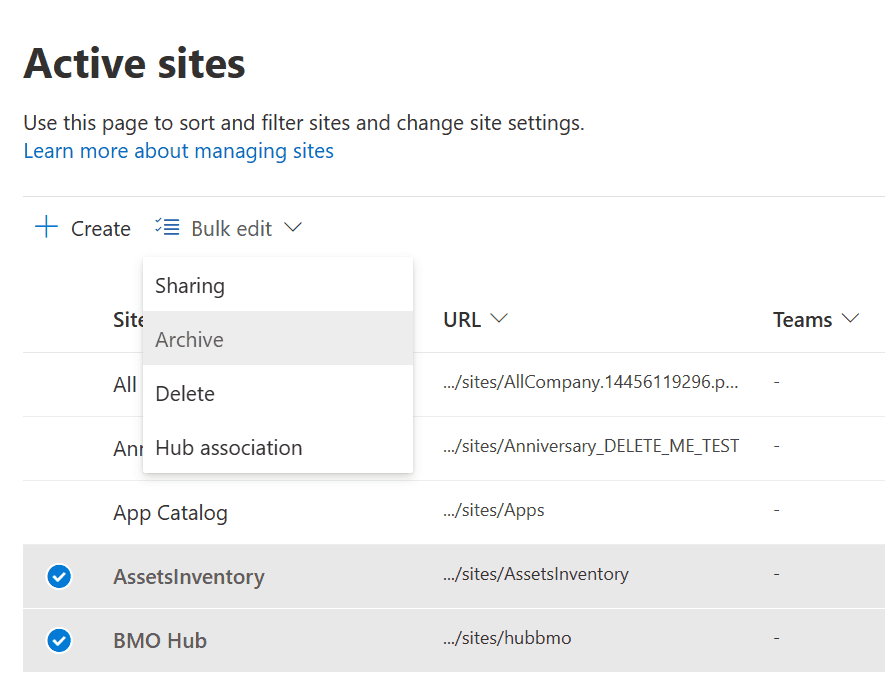
Archive a Site Using PowerShell
To archive a site using PowerShell, use the Set-SPOSiteArchiveState commandlet. It’s part of the SharePoint Online Management Shell
Set-SPOSiteArchiveState https://contoso.sharepoint.com/sites/Marketing -ArchiveState Archived
Alternatively, you can do the same using PnP.PowerShell:
Set-PnPSiteArchiveState https://contoso.sharepoint.com/sites/Marketing -ArchiveState Archived
Can I Archive a Microsoft 365 Group-Connected Team Site?
Yes, you can. When you archive a site, Microsoft Teams-related chats are still accessible. However:
- The Files tab will show a message that the site is archived.
- If you attempt to attach a file to a channel message, you’ll get an error message:

However, you can still create messages within a team’s channel. If you want to archive a Microsoft Teams Team fully, you can use the Set-PnPTeamsTeamArchivedState PnP PowerShell commandlet or archive a Team using the Teams settings
Searching for the Content that Was Archived
You can still search for the content that was archived. The search works within the archived site. In this case, I searched for “path:< site url >“. As you can see, the search results are still available.

However, when clicking on the search result, you will see the following message:
The site is archived A SharePoint Administrator archived this site. If you need access, ask an admin to reactivate it.
Questions and Answers
Suppose I have 1 TB of SharePoint storage available. If I archive a 100 GB site, how much will I pay for the archived site?
The archived site will not cost you anything if you have enough SharePoint tenant storage. You are only charged for the storage that exceeds the total SharePoint tenant’s capacity.
How do I know how much storage is used by the archived site?
Checking the storage used by an archived site is a straightforward process. Simply navigate to the SharePoint Admin center, locate the ‘archived sites’ section, and check the ‘Storage used (GB)’ column.

Get a list of archived sites using PowerShell
I tried, but there is a bug with the SharePoint Online Management shell. Get-SPOSite -Limit All | Where-Object {$_.LockState -eq "NoAccess"} does not return any archived sites even though all archived have LockState property set to NoAccess. I will update this article once the issue is fixed.
Conclusion
In this article, we learned how to archive SharePoint Online sites using the Microsoft 365 Archive feature.
Share
Related Posts







